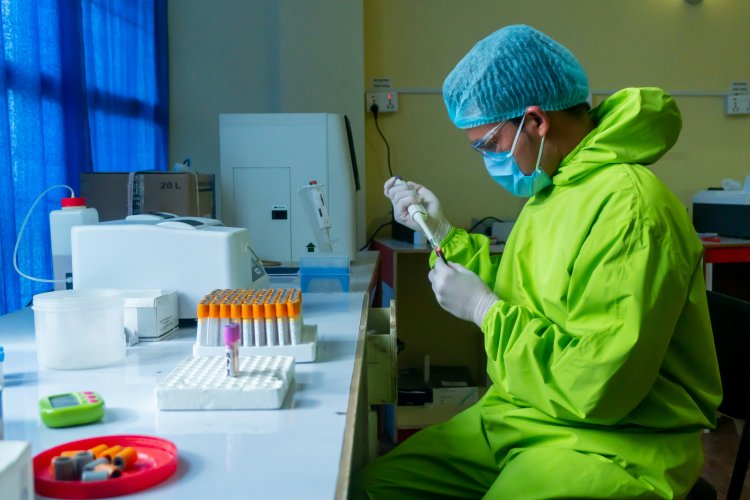Protein-Fluorophore Bioconjugation: A Powerful Tool for Biochemical Research
Share this Post to earn Money ( Upto ₹100 per 1000 Views )

Protein-fluorophore bioconjugation, the process of selectively attaching fluorescent dyes to specific proteins, has emerged as a powerful tool in biochemical research. This technique allows scientists to visualize and track proteins within living cells, providing invaluable insights into protein function, localization, and interactions. In this article, we will explore the principles, methods, and applications of protein-fluorophore bioconjugation, highlighting its potential to revolutionize our understanding of biological processes.
Principles of Protein-Fluorophore Bioconjugation
At its core, protein-fluorophore bioconjugation involves the covalent attachment of a fluorophore, a fluorescent molecule, to a target protein. This is achieved through a chemical reaction between a reactive group on the fluorophore and a specific amino acid residue on the protein surface. The choice of fluorophore and the site of attachment are critical, as they must not interfere with the protein's native function or structure.
The most commonly targeted amino acid for bioconjugation is cysteine, due to its rarity in proteins and the high reactivity of its thiol group. Fluorophores containing maleimide or iodoacetamide moieties can selectively react with cysteine thiols, forming stable thioether or sulfide bonds. Other amino acids, such as lysine or histidine, can also be targeted using appropriate fluorophore chemistries.
Methods for Protein-Fluorophore Bioconjugation
Several methods have been developed for protein-fluorophore bioconjugation, each with its own strengths and limitations. The most straightforward approach is direct labeling, where a fluorophore is reacted with a purified protein sample. This method is simple and versatile but requires a cysteine residue at the desired labeling site.
For proteins lacking a suitable cysteine, site-specific bioconjugation techniques can be employed. These involve introducing an unnatural amino acid, such as a fluorophore-conjugated amino acid, at a specific position in the protein sequence. This is achieved through genetic code expansion or bioorthogonal labeling strategies, ensuring precise control over the labeling site.
Applications of Protein-Fluorophore Bioconjugation
The applications of protein-fluorophore bioconjugation are vast and growing. In live-cell imaging, fluorescently labeled proteins can be tracked in real-time, providing insights into protein dynamics, localization, and interactions. This has shed light on various biological processes, from protein transport and signaling to cell division and migration.
Protein bioconjugation also enables the development of protein-based biosensors. By attaching a fluorophore whose emission properties change upon binding to a target molecule, researchers can create sensors for detecting specific analytes or monitoring biochemical reactions within cells.
Furthermore, protein-fluorophore bioconjugates are being explored for therapeutic applications. Antibody-drug conjugates, where a fluorophore is replaced with a cytotoxic drug, have shown promise in targeted cancer therapy. Fluorescently labeled proteins may also be used for image-guided surgery or as diagnostic agents for in vivo imaging.
Challenges and Future Directions
Despite the power of protein-fluorophore bioconjugation, several challenges remain. Ensuring the specificity and efficiency of the labeling reaction, while preserving protein function, is a major hurdle. The development of new fluorophores with improved brightness, stability, and spectral properties is also crucial for advancing bioconjugation applications.
In the future, we can expect to see further innovations in bioconjugation methodologies, such as the use of novel chemistries and bioorthogonal reactions. The integration of protein engineering and synthetic biology approaches will also enable more precise control over the labeling process. As the field continues to evolve, protein-fluorophore bioconjugation holds great promise for illuminating the complex world of protein biology and beyond.

 profacgen
profacgen 







